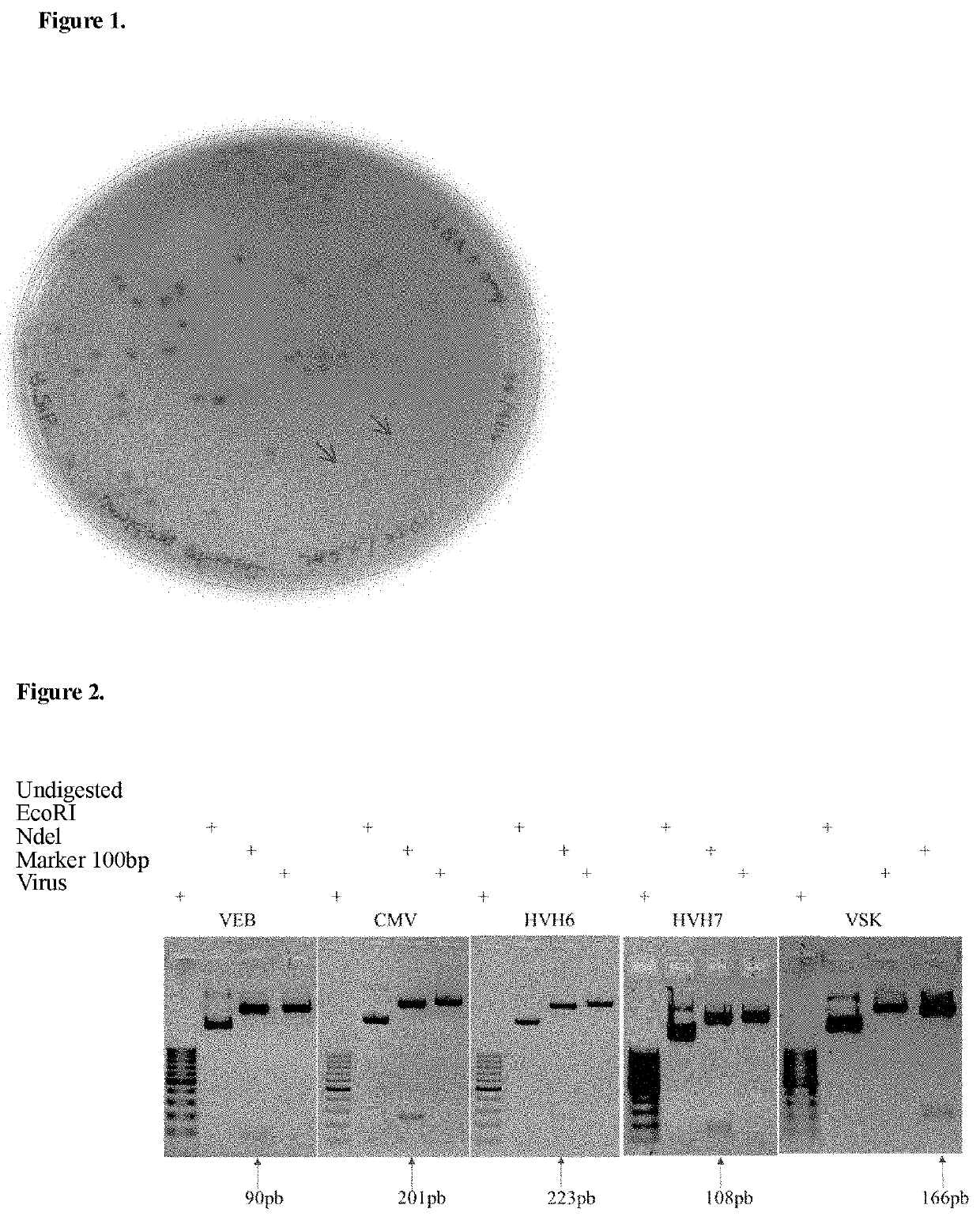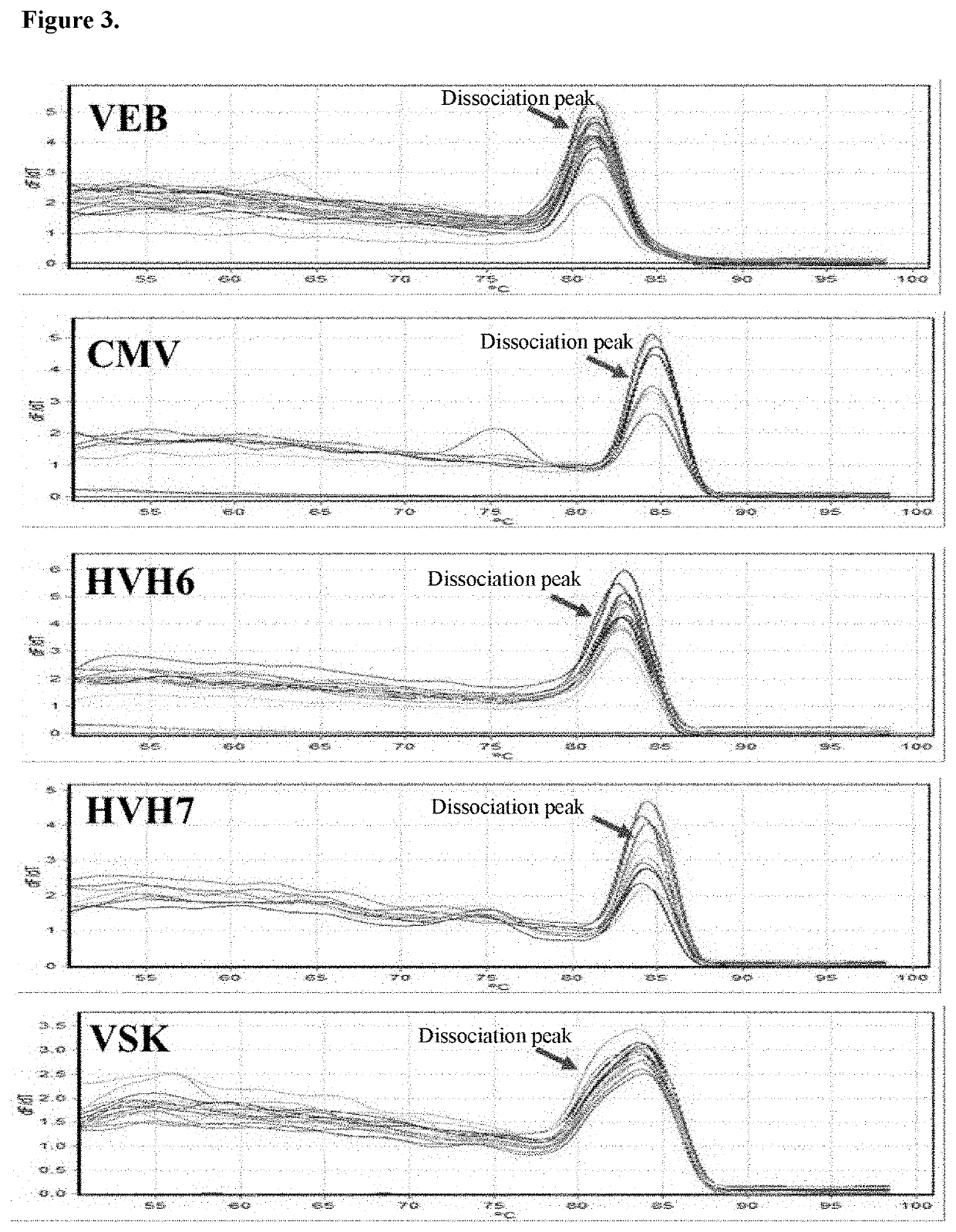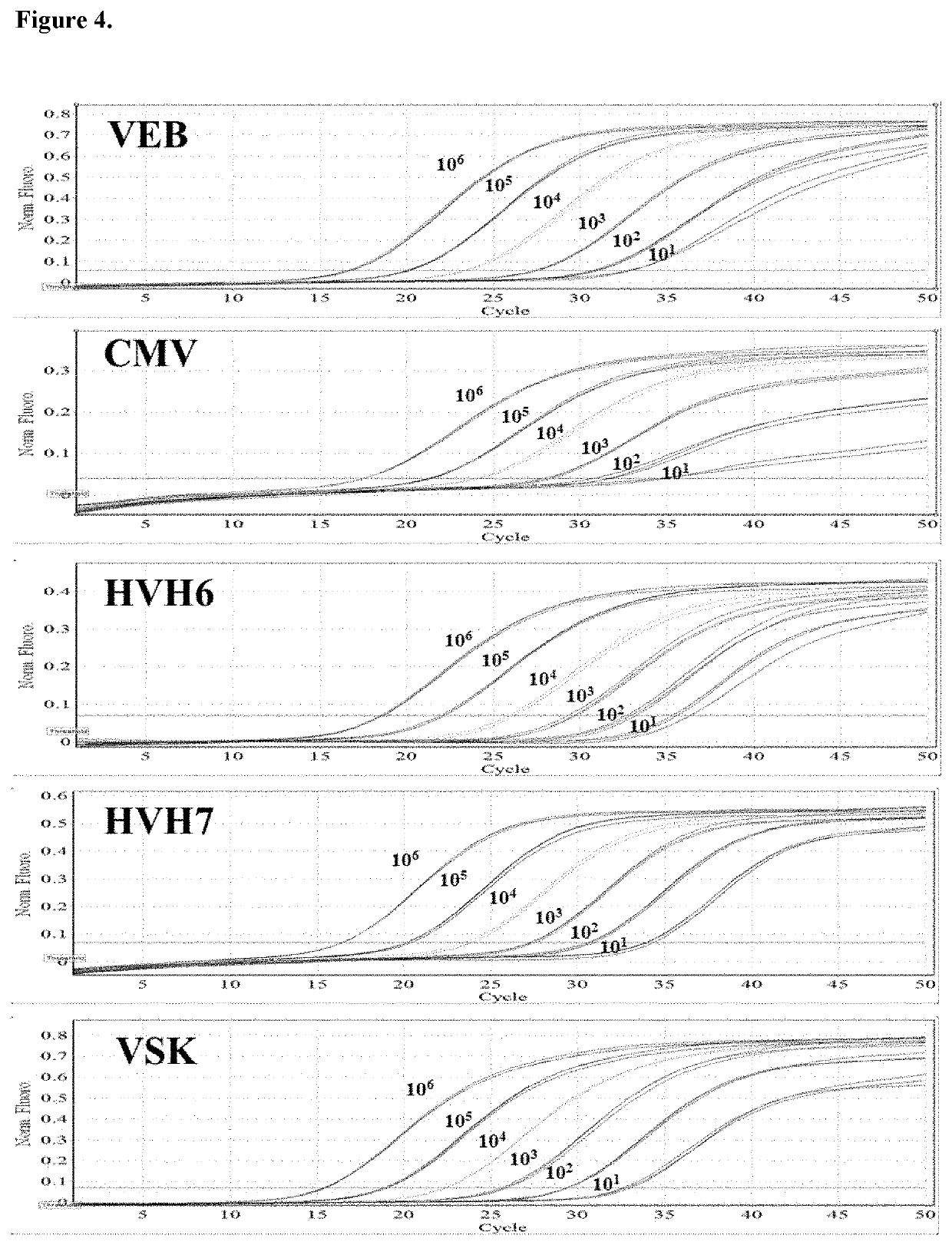Method For The Simultaneous Detection And Quantification Of Epstein-Barr Virus, Cytomegalovirus, Human Herpesvirus 6, Human Herpesvirus 7 and Kaposi's Sarcoma Virus Using A Multiplex, Real-Time Polymerase Chain Reaction
a technology of simultaneous detection, which is applied in the field of simultaneous detection and quantification of epstein-barr virus, cytomegalovirus, human herpesvirus 6, human herpesvirus 7, kaposi's sarcoma virus using a multiplex, real-time polymerase chain reaction, can solve the problems of increasing the risk of infection, increasing the risk of transplant patient's various complications, and high load of herpesvirus
- Summary
- Abstract
- Description
- Claims
- Application Information
AI Technical Summary
Benefits of technology
Problems solved by technology
Method used
Image
Examples
example
[0065]This example involves the analysis of herpesviruses 4 (EBV), 5 (CMV), 6 (HHV6), 7 (HHV7) and 8 (KSV) in pediatric post-transplant patients.
[0066]The Hospital Infantil de Mexico Federico Gomez (HIMFG) is one of the main transplant centers in our country, it has three solid organ transplant programs: kidney, liver and heart (24).
[0067]Viral loads of five herpesviruses (EBV, CMV, HHV6, HHV7, and KSV) were determined in total peripheral blood leukocytes from 27 pediatric patients undergoing kidney or liver transplantation. 349 samples were collected in a follow-up of 4-12 months. The following results were found: samples showed a point whose viral load exceeded any of the five established clinical thresholds; 16 of them presented sustained high viral loads in contiguous times, with HHV7 being the virus that most frequently exceeded the established threshold. In conclusion, the method developed in this work was useful in the detection of the 5 herpesviruses in a group of post-trans...
PUM
| Property | Measurement | Unit |
|---|---|---|
| temperature | aaaaa | aaaaa |
| dissociation temperature | aaaaa | aaaaa |
| dissociation temperature | aaaaa | aaaaa |
Abstract
Description
Claims
Application Information
 Login to View More
Login to View More - R&D
- Intellectual Property
- Life Sciences
- Materials
- Tech Scout
- Unparalleled Data Quality
- Higher Quality Content
- 60% Fewer Hallucinations
Browse by: Latest US Patents, China's latest patents, Technical Efficacy Thesaurus, Application Domain, Technology Topic, Popular Technical Reports.
© 2025 PatSnap. All rights reserved.Legal|Privacy policy|Modern Slavery Act Transparency Statement|Sitemap|About US| Contact US: help@patsnap.com



